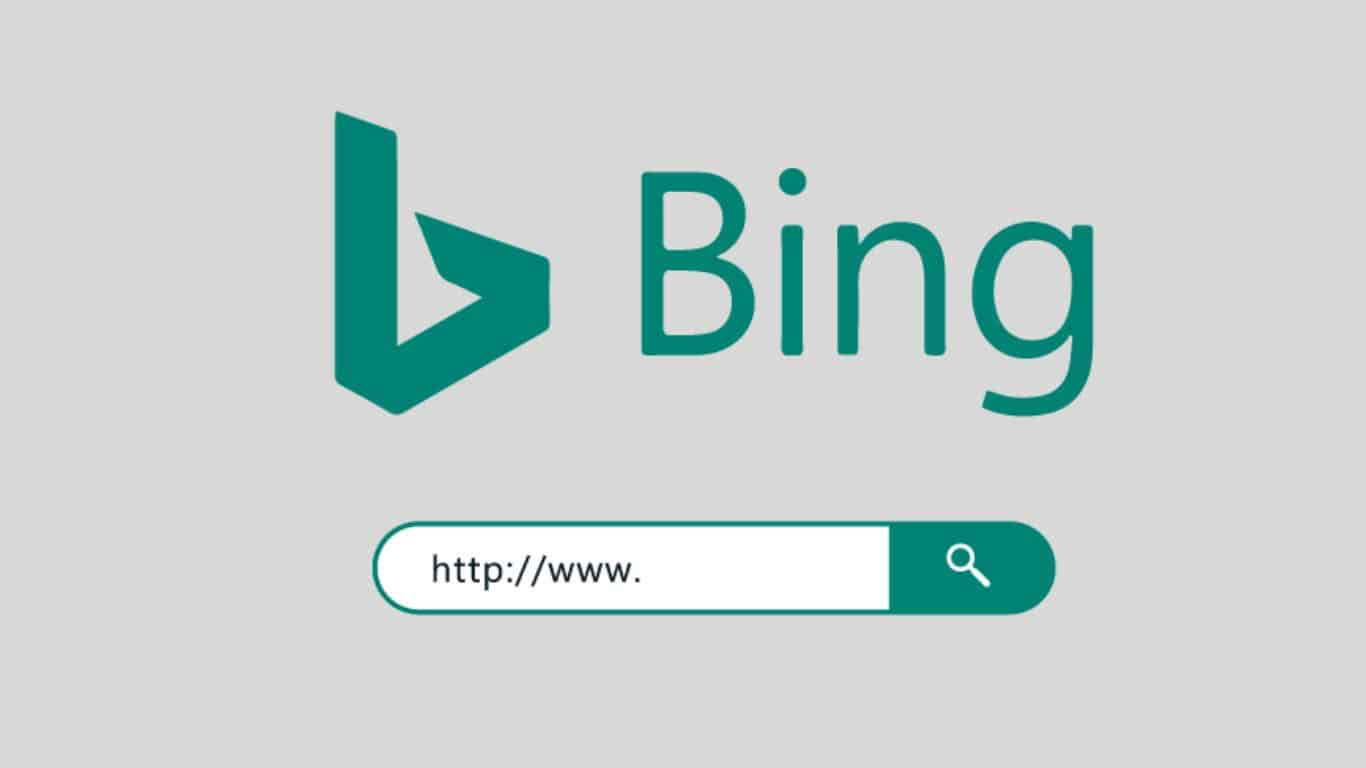The Ultimate 12-Step SEO Checklist
Are you struggling to get your website on page one of Google search results? You’re not alone. But with the right strategies and techniques, you can achieve and maintain those coveted top rankings.
Whether you run an e-commerce store, a local service business, or are a manufacturer or fabricator, our complete SEO checklist has got you covered. We’ll guide you through all aspects of SEO, from technical optimizations to on-page strategies and keyword research.
Don’t settle for being overshadowed by your competitors. Partner with Invite Them Home to take control of your SEO and climb to the top of the search results. This is the most comprehensive SEO checklist you’ll find anywhere. Get ready to dominate your competitors in the search rankings!
If you are interested but not ready to climb the SEO mountain by yourself? Contact us for help.
Table of Contents
- ^#1 Know the basics of SEO
- ^#2 Know where you stand
- ^#3 Know your technical SEO
- ^#4 Know your keywords
- ^#5 Know your tools
- ^#6 Know your off-page SEO
- ^#7 Know Bing and its tools
- ^#8 Know your content strategy
- ^#9 Know your landing pages
- ^#10 Know your competition
- ^#11 Know your social media presence
- ^#12 Know your progress
- ^#Bonus: Call Invite Them Home!
#1-Know the basics of SEO

If you’ve ever wondered what SEO is and how it can benefit your online presence, we’re here to break it down for you. SEO, or search engine optimization, is the key to improving your website’s visibility on search engines like Google and Bing. By creating relevant and high-quality content, enhancing user experience, and implementing the best optimization practices, you can fulfill users’ search needs quickly and accurately.
But why is SEO so important? With billions of people relying on search engines every day, it’s crucial for your website to appear among the top search results for your target keywords. The higher your website ranks, the more visitors you’ll attract. SEO is not just about getting clicks, though. It’s about attracting the right audience – those genuinely interested in what your organization and your site offer. With a solid SEO strategy, you can ensure that your website matches user search intent, driving meaningful conversions and increasing your chances of success.
So, how does SEO work? It all starts with the search engine algorithms. When you search for something, these algorithms analyze search keywords (the search phrase you entered via voice or keyboard) and webpage content to provide you with the most relevant results. The process can be broken down into three steps: crawling, indexing, and ranking. During crawling, search engines discover web pages. Indexing is where they organize and store these pages. Finally, ranking determines the order in which web pages appear in search results.
To rank your web pages, search engines consider over 200 signals. These signals fall into three main pillars of SEO: technical optimization, on-page optimization, and off-page optimization. From the presence of keywords in the title tag to the loading speed of your web pages, these signals play a crucial role in determining your website’s ranking. Google, by far the leading search engine, continuously improves its algorithms with the help of artificial intelligence. This ensures that even unfamiliar words or phrases can be understood and related to similar search queries, resulting in more relevant search results.
You may be wondering if having an SEO strategy is truly necessary for your business. Let’s delve into the impact of SEO on your brand’s success.
Boost Visibility and Rankings
Capture the attention of potential customers by securing a top spot in search engine rankings. The higher your website ranks, the more likely it is for users to click through and engage with your brand. Even if they don’t convert immediately, your presence in search results builds familiarity and paves the way for future interactions.
Drive Web Traffic
With effective SEO, you will increase your organic search engine traffic, attracting a greater number of daily visitors. The more relevant people who visit your site, the higher your sales potential becomes. Maximize your chances of making a sale by ensuring that more eyes are on your site.
Build Trust
Elevate your brand’s credibility by optimizing your website for search engines. Achieving higher rankings not only boosts visibility but also fosters trust with potential customers. When your website appears at the top of search results, users perceive your brand as trustworthy and reliable.
Improve User Experience (UX)
Enhance the browsing experience for visitors by optimizing your site’s content and design. A well-optimized website ensures a seamless user experience for both mobile and desktop users. You reduce bounce rates and increase visitor engagement by improving page load speed and addressing user inquiries among other factors.
Fuel Business Growth
High rankings for popular keywords result in increased organic traffic and heightened chances of attracting customers, generating leads, and boosting sales. As users find your website through search engines, they may also share your brand across social media platforms, further amplifying your reach. SEO is the key to unlocking your brand’s growth potential.
Now that we have you convinced that your business needs SEO, take a look at the rest of your SEO checklist. If it seems daunting, remember that Invite Them Home offers comprehensive services to walk with you at each step!
#2-Know where you stand
Monitoring your current key performance indicators (KPIs) is crucial before continuing your SEO checklist. We aim to provide you with a comprehensive digital marketing guide to help you develop KPIs and evaluate your website’s search engine optimization performance.
To benchmark your SEO performance, analyze key website metrics and user experience to establish a baseline. Then, we will monitor your SEO performance over time to gain valuable insights and measure the effectiveness of our efforts.
You can access free data from Google Analytics and Google Search Console to track your SEO performance daily, weekly, monthly, or yearly depending on your campaign components. At ITH, we find monitoring your performance monthly gives us the best indicator of how your website is performing.
Here are a few of the core KPI’s we will watch:
Organic search traffic
In order to increase your website’s visibility and attract quality traffic with organic visits, it’s essential to see where you stand now. At ITH, we find out how well your web pages rank for relevant keywords and measure your organic traffic accurately.
Part of our (free!) SEO audit includes your current organic traffic. We offer trend graphs that will let you know how your strategy is working. Even if your graph shows increased search term listings and traffic, if the growth rates are not meeting your goals, it might be time for an SEO strategy overhaul.
Impressions, clicks, and conversions
Any SEO campaign relies on your impressions, clicks, and ultimately conversions to maximize ROI.
Impressions:
Impressions are the starting point of digital marketing. With each web page load, an impression is generated. However, it’s important to note that just because an ad is displayed doesn’t guarantee that it’s being read or paid attention to. Impressions simply mean that the ad was shown on the page, like a billboard you drive by without noticing.
Clicks:
Clicks are crucial in the online advertising process. They represent interested visitors and are the basis for pricing in most paid advertising campaigns. When a visitor clicks an ad, they are directed to the advertiser’s website, where the goal is to make a sale or capture a lead. Remember, not every person who sees an ad will click on it, so you’ll always have more impressions than clicks.
Conversions:
Conversions are the ultimate goal of every campaign. Whether it’s making a sale, capturing a lead, or getting a visitor to download an ebook, conversions are ultimately what you’re after. The effectiveness of any campaign can be measured by the number of conversions in relation to the total dollars spent, determining your return on investment (ROI).
Individual keyword rankings
Another piece of your SEO audit will measure individual keyword rankings. Our report provides valuable insights into your search visitors and their behaviors. While it’s great to see your company name in your keywords, it may indicate overreliance on branded terms. Having more than 40% branded search terms means you’re missing out on attracting new customers who are unaware of your products or services.
Take advantage of our offer for a free Zoom call, where we can provide you with a comprehensive list of your top 100 position keywords in a convenient spreadsheet format.
Domain authority
Domain Authority (DA) is a powerful metric that predicts a domain’s likelihood of ranking in search engine results compared to its competitors. Although Google doesn’t use Domain Authority as a ranking factor, it provides valuable insights into your website’s performance and competitiveness.
Originally developed by Moz, Domain Authority has become widely recognized and adopted by various SEO tools like SEMrush. These tools use algorithms that consider factors such as backlinks, referring domains, and search traffic to calculate an Authority score specific to your site.
This score is determined by both the quantity and quality of links a webpage receives. If your page has backlinks from authoritative sources like Google, Wikipedia, or other reputable sites, it’s more likely to have a higher score.
Determining what constitutes a good domain authority for your business requires analyzing your top competitors and tailoring your strategy accordingly. By understanding your own ranking and that of your competitors, you can make informed decisions to optimize your website’s performance.
Because we have access to these tools, we will give you insight into your current DA and make a strategy to improve it if needed.
#3-Know your technical SEO

Technical SEO is all about optimizing your site to make it faster, easier to crawl, and more appealing to search engines. By staying on top of technical SEO, you can give your website the boost it needs to stay above the competition.
But why does technical optimization matter? Google and other search engines want to deliver the best search results to their users. That’s why they evaluate web pages based on various factors, like page loading speed and website structure. By fine-tuning the technical aspects of your site, you’re helping search engines crawl and understand your content. And if you do it right, you’ll be rewarded with higher rankings!
However, it’s not just about pleasing search engines. Your website should also provide an amazing user experience. A fast, clear, and user-friendly site is essential for retaining visitors and keeping them engaged. The good news is that when you create a solid technical foundation, you’re not only impressing search engines but also delighting your users.
Here are the top priorities on your technical SEO checklist:
Crawlability
Ever wondered how search engines like Google and Bing manage to provide relevant results whenever you search for something? It’s all thanks to web crawlers.
Web crawlers are like the diligent librarians of the virtual world. Their main job is to download and index content from every corner of the internet. They tirelessly explore websites and gather information, so that when you need it, it’s just a click away.
Web crawlers diligently categorize and sort the vast amount of online information. They analyze titles, summaries, and even some of the internal text of web pages to figure out what they’re all about.
Keep your website visible and accessible to search engine crawlers by consistently updating and adding new content. Search engines thrive on fresh content. By regularly updating and adding new content, you show that your website is active and relevant. This will motivate search engine bots to visit your site more often, ensuring they capture the latest updates and changes.
Invite Them Home has outstanding copywriters to regularly update your website with new content. Whether that’s publishing new blog posts or updating existing ones, it will keep search engine bots engaged and your content up-to-date in their index.
HTTPS
In today’s digital landscape, security is imperative, and Google knows it. That’s why they prioritize websites that are trusted, secure, and certified. By obtaining a certificate and switching to HTTPS, your website can gain an advantage in Google’s ranking algorithm.
But what does HTTPS really mean? When a website has a secure connection, it means that users can browse with confidence, knowing that their information is safe and encrypted. This level of security instills trust in your visitors, resulting in increased traffic.
Google has recognized the importance of HTTPS and now uses it as a ranking signal. HTTPS websites have a higher chance of ranking higher than HTTP links, so even if your website doesn’t handle confidential information, switching to HTTPS can still benefit your online presence.
By implementing HTTPS for all of its resources, whether pages or images, your website gains a slight advantage in Google’s ranking system. While it’s not as significant as high-quality content, it’s a step in the right direction for your website to climb the ranking ladder.
Broken links
A broken link, a hyperlink that no longer leads to a valid page or resource, can hinder the user experience for your website. When a user or crawler follows a broken link, they encounter a frustrating 404 or 410 error code.
There are two types of broken links to consider in SEO:
Broken outgoing links:
These are links found on your page or website that no longer lead to their intended destination. While it’s normal for websites to have some broken outgoing links due to the dynamic nature of the internet, too many can negatively affect user experience.
Broken backlinks:
These are links from other domains that point to pages on your website that no longer exist. Instead of benefiting from these backlinks, they become missed opportunities to increase the visibility and ranking potential of relevant pages on your site.
By addressing and fixing broken links, you can enhance the user experience and harness the potential value and authority of backlinks.
Duplicate content
Duplicate content refers to content that is either identical or very similar to content found on other websites or other pages within your own site. This can have a negative impact on your rankings on Google.
Put simply, duplicate content is content that is word-for-word the same as content found elsewhere.
However, it’s important to note that “duplicate content” also refers to content that is similar to other content, even if it has been slightly rephrased.
So, how does this impact your SEO?
In general, Google is not inclined to rank pages that contain duplicate content. In fact, Google explicitly states that it strives to index and display pages with unique information.
Therefore, if your website contains pages that lack distinct information, it can harm your search engine rankings. Google does not want to rank pages that utilize copied content from other pages in its index.
By avoiding duplicate content, you can improve your chances of ranking higher on Google and driving more organic traffic to your website. ITH will not only help you identify duplicate content, but work with you to create fresh new content that drives traffic.
#4-Know your keywords
Keywords are the most important piece of your on-page SEO checklist. When it comes to keyword research, there are three crucial elements that demand your attention.
Relevance
To rank on Google, your content must align with the search intent of users. It needs to fulfill their needs and offer value that surpasses other resources available online.
Authority
Google favors authoritative sources, so it’s essential to establish your website as a trusted and reliable destination. By creating informative and helpful content and promoting it to gain meaningful backlinks, you can boost your authority. However, if you’re up against heavy hitters like the Wall Street Journal or WebMD, exceptional content becomes even more crucial.
Volume
Ranking on the first page is great, but it’s worthless if nobody is searching for that keyword. Like setting up shop in a ghost town, it won’t bring in any traffic. To assess a keyword’s potential, you need to consider its monthly search volume, which is the number of times it’s searched across all audiences each month.
Once you understand how keywords and phrases work, it’s time to develop your keyword strategy. Keyword research is so important, it has its own checklist.
1: Choose General Categories for Your Keyword Research
Create a simple spreadsheet with 5 to 10 general categories that relate to your topic. These categories should align with what your target audience is interested in and might include product categories or topics you already cover on your main site and blog.
2: Expand Your Categories with Relevant Phrases
For each general category, brainstorm a list of phrases that your customers might use when searching for information, products, or services. We can help you utilize data from analytics for this step.
3: Discover Related Search Terms
To further expand your keyword list, try various techniques like scrolling to the bottom of a Google search page to find related search phrases. You can also use tools like AnswerThePublic or Google’s Keyword Planner to gather additional relevant terms.
4: Evaluate the Strength of Your Keywords
Use tools like Keyword Planner, Ahrefs, Semrush, Wordtracker, or Ubersuggest to analyze your keywords. Look for exact search terms, high search volumes, and low organic search competition. Don’t forget to check for related terms that may have been missed.
5: Assess Your Industry Ranking
If big brand names already dominate the search results for your identified keywords, consider targeting less competitive long-tail keywords. Unless your competitors have a weak content strategy, in which case you may be able to outrank them with higher-quality content.
6: Understand Search Intent
Ensure that your content matches the search intent of your target audience. When someone searches for a specific keyword, they are looking for a specific type of answer. Make sure your content aligns with their intent, whether it’s providing information or selling a product. Keep notes on the intent of each keyword in your spreadsheet or conduct intent checks before creating content.
Additional Keyword Considerations
Those aren’t the only things to think about when conducting keyword research.
Competitor research
When conducting keyword research, don’t forget to equip yourself with the right tools. It’s crucial to keep a close eye on the competition and their rankings for the keywords you’re targeting.
Wondering how to know if your competitors are ranking for high-search-volume keywords? Simply use everyone’s favorite search engine, Google! Just enter the keywords you’re interested in and see what’s currently ranking.
But what about your paid search competitors? No worries, you can rely on the Google Ads Auction Insights report. It provides valuable information on how your main competitors are performing compared to you in terms of impression share, average position, and more.
And if you want to dig deeper into your competitors’ strategies, we use tools like SpyFu or SEMRush. We enter their URL instead of a keyword or topic and discover the keywords they’re ranking for.
Question keywords
Increase brand trust and loyalty by providing valuable answers to your customers’ pressing questions. By addressing their specific problems, you’ll attract their attention and encourage them to engage with your content. Additionally, focusing on question keywords can greatly improve your visibility in organic search results. As you establish credibility by offering high-quality answers to challenging questions, your search engine rankings will rise.
But how do you find these questions? What are your potential customers asking? Once you uncover these valuable insights, you’ll have a treasure trove of informative keyword phrases to incorporate into your SEO, paid search, and content strategies.
Once you have identified these questions, the next step is to use keyword research tools to gather search volume data and other relevant metrics. This will help you determine which keywords are worth pursuing. One effective strategy is to target multiple keywords in a comprehensive “ultimate guide” resource (like this one!) that provides all the information needed and more to answer your audience’s questions.
Negative keyword research
If you’re running a paid campaign, you can maximize your PPC budget by conducting thorough negative keyword research. By excluding irrelevant words, you can save valuable money on unwanted clicks. Don’t underestimate the impact this can have on your campaign’s success. This is especially crucial if you’re using broad or phrase match types.
Need a quick way to identify negative keyword terms? Try typing your keyword into Google and check out the suggestions that appear. For example, as a plumber, you wouldn’t want to show up for “pipe cleaner craft” queries and waste resources on low-intent clicks.
Your business can unlock the true potential of your SEO strategy with professional keyword research tools and expertise you’ll find at ITH. We help you discover the hidden insights and secrets behind effective keyword analysis.
We’ll uncover the hottest keywords and strategically integrate them into your website, catapulting you ahead of the competition! Take a look at our keyword research page to discover more.
#5-Know your tools
If you’re going to get to work constructing your optimal website, you need to have the right tools for the job.
First, let’s start out with the free resources you’ll find directly through Google, including Google Search Console, Google Analytics, and Google My Business:

Google Search Console
Google Search Console allows you to discover how your website is performing on Google Search and enhance its appearance to attract more relevant traffic. Search Console provides insights and optimization strategies for website owners.
With GSC, you can gain valuable information on how Google crawls, indexes, and serves your website. You can also monitor and optimize your search performance with ease.
Google Search Console will notify you via email if any new issues arise. However, checking your account once a month or after making content changes is recommended to ensure stable data.
Consider submitting a sitemap to expedite your site’s discovery. While Google can find your pages without it, utilizing Google Search Console to submit a sitemap might accelerate the process. Additionally, you’ll be able to monitor related information.
The Search performance report provides insights on your website’s traffic from Google Search, offering breakdowns by queries, pages, and countries. Discover trends for impressions, clicks, and other vital metrics.

Google Analytics
Track website activity, understand traffic sources, and optimize your online campaigns with Google Analytics. This powerful tool provides valuable insights on session duration, pages per session, bounce rate, and more. Plus, it seamlessly integrates with Google Ads, allowing you to measure landing page quality and conversions.
But that’s not all – Google Analytics offers advanced features like funnel visualization to identify poorly performing pages, custom visitor segmentation for targeted analysis, and robust e-commerce reporting to track sales activity and performance.
And now, with the latest version, GA4, you can take your analytics to the next level. GA4 gives you AI-powered predictive metrics, customizable reports, instant data analysis with DebugView, anomaly detection, and improved e-commerce reports.

Google My Business
Maximize your online visibility with Google Business Profile management. Creating a Business Profile is not enough – you need the power to edit and optimize it for effective SEO and lead generation.
Gain control over your Google Business Profile by creating a free Google My Business account. This valuable tool allows you to manage and optimize your business listing on Google, a key directory for businesses.
Receive valuable insights on your audience and local search performance through the Google My Business dashboard. You can use GMB to discover the queries customers use to find your profile, track actions taken, and see how your photos compare to competitors.
While Google’s free tools are a great starting point, if you’re going to bring your A-game, you need the help of professional tools that we use as SEO professionals:
SemRush
Considered the best in the business, SemRush helps you uncover the most relevant keywords for your website. Boasting a tracking tool that monitors over 500 million popular keywords, SemRush has proven its worth to our clients and the industry as a whole.
Serpstat
For the most accurate keyword rankings, Serpstat reigns supreme. By pulling data from over 230 Google databases and tracking over a trillion backlinks from 160 million websites, Serpstat consistently delivers top-notch reports with unparalleled keyword insights.
Spyfu
Unlock the potential of your keyword strategy with Spyfu. By integrating organic and Pay-Per-Click (PPC) data, this tool provides both click volume and search volume information for specific keywords. Additionally, Spyfu reveals related terms to help guide your campaign and generate fresh keyword ideas.
Ahrefs
Ahrefs is a trusted and reputable tool with one of the largest SERP databases available. With its extensive collection, processing, and storage of search marketing data, Ahrefs provides search professionals like us with invaluable insights. Their keyword explorer allows us to track changes in keyword ranks week by week, enabling us to identify issues and seize opportunities.
Don’t worry about paying for expensive subscriptions to these and the other specialized tools we use, we’ve already done that for you at Invite Them Home!
#6-Know your off-page SEO
Off-page SEO is a crucial part of any successful SEO strategy. It involves optimizing your website outside of its pages to improve its credibility and authority. This includes tactics like link building, guest posting, and social media marketing.
When reputable and relevant sites and people link to or mention your content, it acts as a vote of confidence in your website’s quality. This not only helps search engines view your site as trustworthy but also encourages users to choose your business.
In a competitive online environment, being found is the first step towards success. Both search engines and users discover your content through links and mentions on other websites. These pathways play a vital role in determining the visibility of your website.
Search engines like Google and Bing evaluate the relevance and authority of each piece of content by considering the number of reputable sources that have linked to or cited it. Tools like Moz can help you calculate the domain authority (DA) of your website and estimate page authority (PA) for individual pages.
If you’re struggling with link-building, ITH will help you develop a strategy to get your brand’s name out there!
#7-Know Bing and its tools

Did you know that Bing is the second largest search engine? Even if you haven’t given it much thought, you should definitely consider setting up Bing Webmaster Tools. It’s simple to do and can greatly improve your site’s SEO traffic.
Similar to Google Analytics and Google My Business, Bing Webmaster Tools is a free service from Microsoft that allows website owners to add their sites to the Bing search engine. It not only helps you monitor and maintain your site’s presence on Bing, but also provides valuable insights into how your customers are finding your site.
By using Bing Webmaster Tools, you can track your site’s performance, find the keywords driving traffic, and see how Bing crawls and indexes your site. You can even remove unwanted content from being indexed and disavow links. Additionally, it helps you monitor and resolve any potential malware or spam issues.
In essence, Bing Webmaster Tools gives you a clear view of how Bing sees your website and enables you to make improvements that can boost your rankings and drive more traffic. While it’s tempting to focus on Google, don’t miss out on the opportunity to increase your site’s visibility and reach a wider audience.
#8-Know your content strategy
Achieve top rankings in Google by publishing outstanding content. Content is perhaps the most vital component of successful SEO strategies. Ensure your website captures the attention of visitors by prioritizing important information upfront. Don’t let your valuable content go to waste. Clearly communicate what your page is about to both the user and search engine. This writing style is known as the inverted pyramid, where readers grasp the main ideas within the first few sentences.
Remember your visitors have an extremely short attention span! Visitors have two priorities: finding what they need and finding it quickly. Users typically spend only seconds on a website, but if your page offers value, they’ll stick around. Aim to prove the worth of your web content within 10 seconds. Show visitors you have what they’re looking for and make it easy for them to find. Use well-written and original content to create a useful and user-friendly website.
Target your audience with content marketing efforts. Remember, you’re writing for real people, not just search engines. Understand how users scan web pages for keywords that pique their interest. If your content isn’t meaningful to them, they’ll leave and try somewhere else. This will increase your bounce rate and hinder conversions.
Also, treat every page as if it’s the home page. Visitors may arrive on any page, so every page should provide a basic understanding of your business and intuitive navigation. Ensure visitors can easily find what they need.
We have a proven track record of writing engaging content that has yielded amazing results for our clients. Take a look at our content marketing page for a more in-depth look at what we do.
#9-Know your landing pages

In digital marketing, landing pages are crucial for driving visitors to take action toward a specific goal. Whether it’s making a purchase or subscribing to a mailing list, a well-designed landing page can greatly increase your chances of conversion success.
There are two main types of landing pages: reference and transactional. Reference pages provide targeted information about a product or service, while transactional pages aim to prompt action, typically through a form submission.
The content of a landing page should focus on promoting the desired action and explaining its benefits. The design should be clean, simple, and aligned with your brand identity. It should guide visitors smoothly through the page, with clear buttons that stand out.
A landing page is a single, concise web page that may be divided into sections but should not be too long. Headers, subheaders, buttons, and images should effectively represent the page’s message while maintaining cohesion.
If your website isn’t effectively utilizing landing pages, ITH will help you develop landing pages to drive conversions and achieve your marketing goals.
#10 – Know your competition
Don’t see your competitors as a nuisance – see them as a valuable source of information! By incorporating SEO competitor analysis into your organic search strategy, you can tap into a goldmine of data. This analysis will not only help you create superior, more targeted content but also boost your search engine rankings and attract relevant traffic to your website.
But before you can outperform your competition, you need to know:
Who your “real” search competitors are – it’s not always who you expect.
Which keywords they are ranking for and getting organic traffic
Your SEO competitors’ strength and weaknesses
Your SEO competitors are the websites that rank for the same organic search queries you’re competing for. However, keep in mind that these competitors can vary depending on the topic. Understanding who you’re up against in terms of specific keywords is crucial before publishing or optimizing any pages.
Don’t rely on guesswork – let the data guide you. To uncover your SEO competitors accurately, you’ll need to analyze thousands, if not tens of thousands, of web pages and keywords. That’s where our professional tools in handy.
By monitoring the keywords you’re targeting and your best-performing pages, you can keep a watchful eye on both existing and emerging competition. Discovering what sets their content apart and helps them top the search engine rankings will give you the edge you need.
#11-Know your social media presence
Want to ensure that your content reaches the right audience? Social SEO is the answer.
Understanding the basics of traditional SEO is key to mastering social SEO. Social networks, although not technically search engines, have search bars that function similarly. With the incorporation of traditional search engine features, social platforms are helping users find the specific content they’re searching for.
Gone are the days when social networks were solely for personalized feeds. Nowadays, people actively use social networks to search for information such as product reviews, brand recommendations, and local businesses to visit.
With social SEO, you can ensure that your content is visible to people who are actively searching for it, rather than relying solely on them scrolling through their feeds. Check out our social media marketing services to learn how we harness the power of each platform.
#12-Know your progress
Leave the guesswork behind and embrace the precision of SEO tracking with ITH. We make sure every detail of your organic marketing campaigns is meticulously analyzed and tracked, providing you with an objective view of what’s working and what needs improvement. It’s like having a trusty GPS guiding you toward success, avoiding any roadblocks along the way.
Don’t let data overwhelm you. We will navigate you through the world of SEO tracking, focusing on essential metrics and how often we should monitor them. If you’re unsure where to start,
here are the top five SEO metrics you should prioritize:
Keyword Rankings
Keep up with the ever-changing search engine landscape by monitoring daily keyword rankings. We use a rank tracker tool to present the data in an easy-to-understand report, helping you identify pages that need improvement.
Organic Search Traffic
Measure the success of your SEO campaign by evaluating the amount of organic search traffic it brings. Higher traffic can lead to better search engine rankings, increased brand visibility, and a stronger reputation.
Organic Conversions
It’s not just about getting traffic, but also ensuring its quality. Track how many conversions organic traffic is driving to gauge its effectiveness. Remember, conversions can vary depending on your industry, so we define relevant goals in your Google Analytics account to measure them accurately.
Competitor Analysis
Don’t limit your tracking to your website alone. Monitoring competitors’ rankings, keywords, and SEO metrics can uncover opportunities to improve your website rankings.
Technical SEO Site Health
Ensure your website is SEO-friendly and free from technical issues that hinder your search engine rankings.
Bonus: Call Invite Them Home!
Confused, frustrated, or overwhelmed by SEO? Don’t worry, it doesn’t have to be complicated. At Invite Them Home, we take a straightforward step-by-step approach, keeping you fully informed throughout the process. We believe in accountability and transparency, ensuring you feel confident in our strategy.
Interested in a free website SEO audit? Contact us or give us a call at (262)373-8700 to get started. We’ll use keyword and competitor analytics to show you how we can boost your website’s effectiveness. Our no-obligation analysis will provide actionable steps to improve your website’s performance.
Go ahead and start with Step 13 and contact us today!





